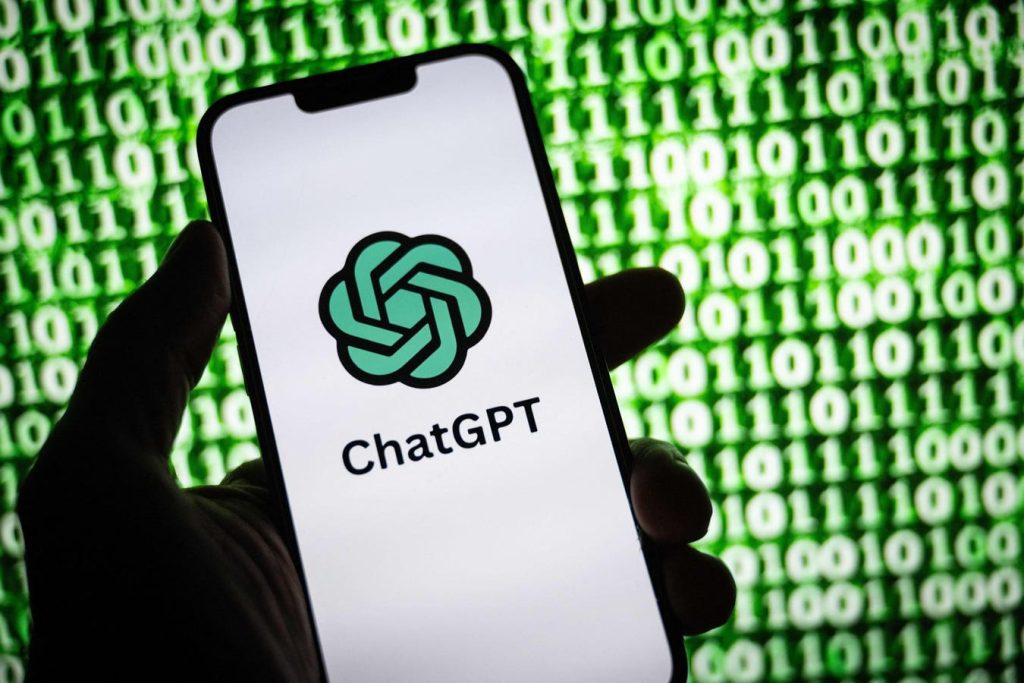This illustration photograph taken on October 30, 2023, shows the logo of ChatGPT, a language model-based chatbot developed by OpenAI, on a smartphone in Mulhouse, eastern France. (Photo by SEBASTIEN BOZON / AFP) (Photo by SEBASTIEN BOZON/AFP via Getty Images)
AFP via Getty Images
With the release of GPT-5, social media users can now generate content that is highly targeted to your audience. The chatbot lets you generate better images for posts, and even create a content calendar that is a step beyond previous models—all based on my own test results.
I have used the GPT-5 AI chatbot extensively today and experimented with content generation to see how it compares to previous models.
Right away, I could see that the bot responded with a more casual flair, one that matches the tone of Instagram or even TikTok much better.
For example, I asked GPT-5 to write a caption about itself. It wrote: “I’ve been keeping a little secret…I just got an upgrade. I’m faster, sharper, and can help you create, plan, and brainstorm like never before. Whether it’s finding the perfect words, turning ideas into art, or just making your day easier—I’m here for it. Say hello to GPT-5. What should we create first?”
That’s far more personal than what GPT-4 wrote using the same prompt: “Introducing GPT-5: the latest evolution in AI technology, designed to provide faster responses, improved accuracy, and enhanced creativity. Experience the future of conversation today.”
What GPT-5 means for content creators
Most reports mention how GPT-5 now uses a more life-like tone, writing in a way that is harder to quantify as robotic or overly structured.
That’s good news for content creators, even if one recent article mentioned how the new bot sounds like an “overworked secretary” with too much energy. In my tests, the writing was clearer, more human, and less structured than the previous version.
I’ve struggled with this issue for the last two years or so, not as a writer but as someone who reads and edits the work of others. I see posts on LinkedIn quite often that are obviously generated by a bot, and the writing is almost always too formal and professional.
Another big change with GPT-5 I’ve noticed already is that the bot will help plan out content in a way that seems more helpful. I asked GPT-5 to create a content schedule for me and it read more like what a human would do. The guidance was lively and fun, with short quips and an emotional resonance that OpenAI promised to deliver.
The bot even listed the CTA (or call to action) which is a common way to make a social media content plan. It means the bot is thinking about the response, not just the words. As an example, one of the posts was: “Something new is coming… and it’s going to change how we create. Any guesses?” The CTA was to ask followers to guess in the comments.
That’s a level deeper than I’m used to—e.g., the GPT-5 bot understanding there’s a task to write content but a deliverable to increase engagement. I never even had to suggest that the bot focus on engagement, since there’s some intelligence built-in to focus on that.
Are the GPT-5 images better?
I would say the actual graphics that GPT-5 produced were not outstanding. One used a purple and yellow swoosh to announce the new chatbot, seemingly borrowed from the OpenAI presentation. I coached the bot on showing a human on the stage and with a crowd in the background, but the results were not outstanding.
This could be an issue for content creators, but many of them will likely use GPT-5 to create captions and content calendars, then rely on other apps to make the images.
Or will they? I wondered if OpenAI might improve the renders because the vision seems to be to have an all-in-one content creation tool.
This GPT-5 chatbot is a step in that direction, with a much better tone and cadence to the writing that feels less robotic. I’m eager to keep experimenting to see what happens next.


